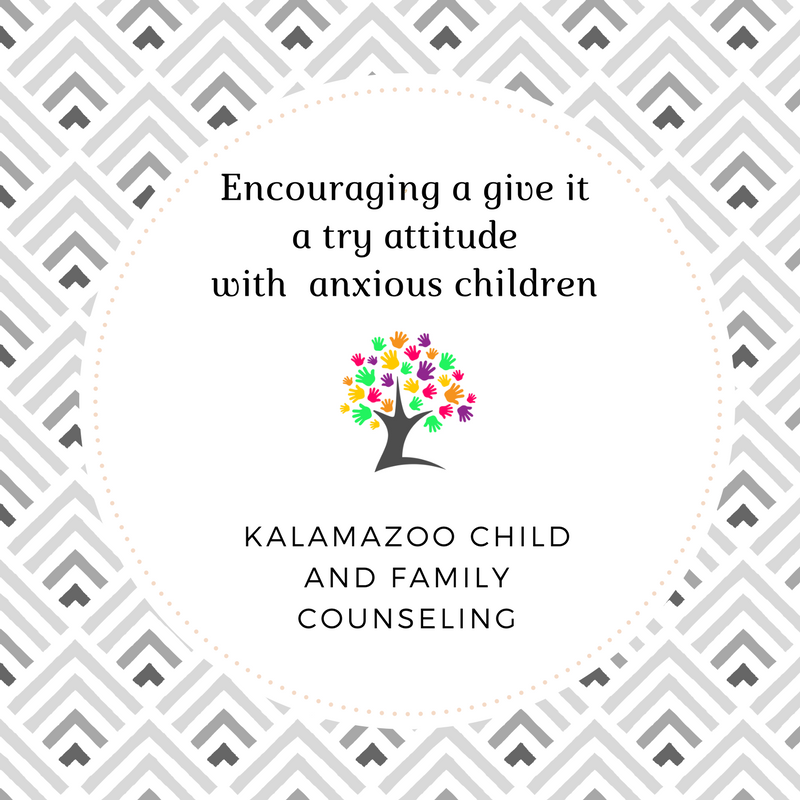
Anxious child? Helping them have a give it a try attitude
Does your hesitant, or anxious child have a hard time trying new things. Sometimes you probably wish they would just jump and give it a try. It’s heart wrenching watching them at the sidelines too nervous to join in. Many children who struggle with anxiety or who worry too much get stuck in the fear of doing something new. It seems too risky, and they are paralyzed by all the “what if’s.”
Many times, when we want kids to not be anxious, what we’d really like to see, is them being brave. How do kids learn to be brave? Bravery is doing something despite feeling scared. We want kids to try new things or do something despite their worry. It is simply not realistic to believe that we can reduce all risk and reassure them that nothing bad will happen. Parents don’t want to provide that sort of security, children need to be able to assess risk and act despite their worry. After all we want kids to try out for the school play knowing not all who audition will get a part. Likewise, we want kids to interview for a job, knowing that not everyone who interviews will be hired.
Offering reassurance to an anxious child
Reassuring statements like, “Nothing bad is going to happen,” or “You’ll be fine” surprisingly enough don’t persuade kids to not be anxious. Additionally, we want nervous or avoidant children to do something despite being anxious, not only act when they feel fine. An anxious child is more likely perceive an unfamiliar situation as threatening than a non-anxious child.
Anxious children have negative expectations about situations. These negative expectations drive the fear response that children experience when faced with something uncertain. Exploring these expectations with children helps them understand that these expectations are just thoughts and what they fear might happen doesn’t always happen. Additionally, they learn that they can handle and cope with big fears.
Helping kids develop a “give it a try” attitude helps primarily in two ways to reduce anxiety
- Parents help children identify negative expectations and test what will happen when they face their fears.
- Children are exposed to their fear, and learn that they can cope and handle the stress.
Parents can have a tremendous impact on helping their nervous or hesitant child. Help children talk about their negative expectations, evaluate and take risks help children learn to be brave and not paralyzed by fear. Chris Hadfield, and astronaut who went blind in space talks about the difference between fear and danger. The reality is most of the time for anxious children their fear of the situation is different than the danger of the situation and encouraging them to give it a try will help them learn that can deal with stress, anxiety and be just fine.
References:
Creswell, C., Parkinson, M., Thirlwall, K., & Willetts, L. (2017). Parent-led CBT for child anxiety: helping parents help their kids. New York: Guilford Press.
Jeff LaPonsie LMSW
Jeff LaPonsie is a clinical social worker at Kalamazoo Child and Family Counseling, PLLC. He provides counseling to children and families in the Kalamazoo, Portage, Mattawan, and the South West Michigan area. He is passionate about helping challenging children and frustrated parents. Jeff has over seven years of experience working with at risk youth. His clinical expertise includes providing play therapywith children with behavioral, anxiety, attachment and trauma related disorders.


Write a Comment